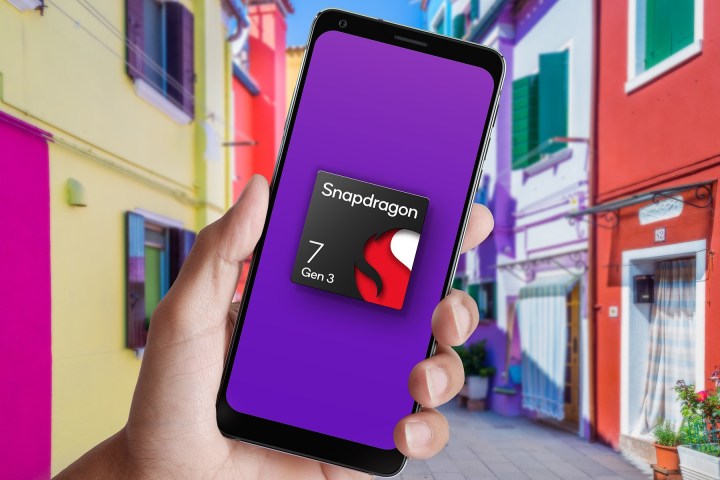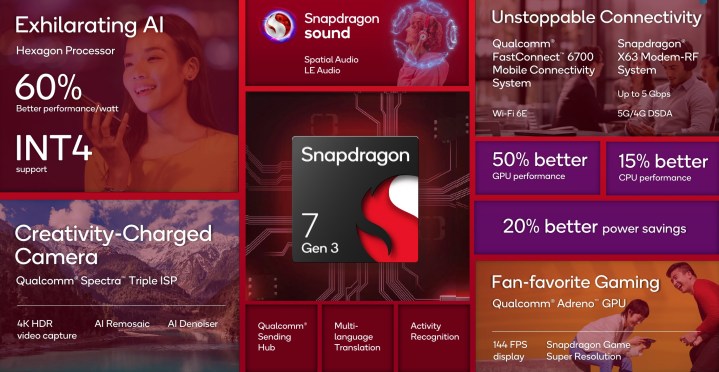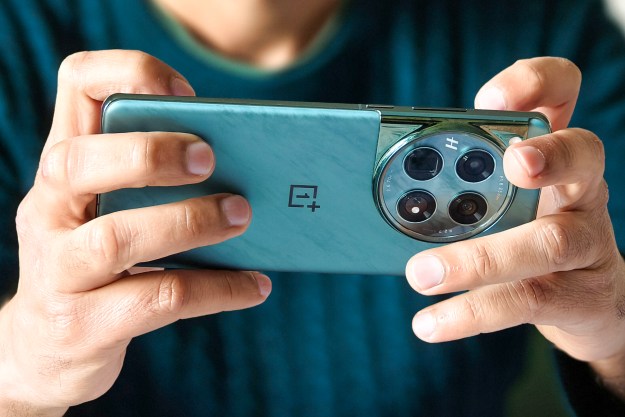
Qualcomm has a new mobile platform on the table, and this one targets upper-midrange smartphones and promises to bring some new AI tricks. The latest from the chipmaker is the Snapdragon 7 Gen 3, which technically succeeds the Snapdragon 7+ Gen 2, but the company is comparing most of the improvements against the older Snapdragon 7 Gen 1.
The new platform is said to bring a 15% boost in processing power, a 20% rise in energy efficiency, and a massive 50% jump in graphics capabilities. Based on the 4nm fabrication process, it packs a single prime core, a trio of performance cores, and four efficiency cores. Interestingly, these cores are clocked at a lower frequency compared to those on the Snapdragon 7+ Gen 2. However, this won’t be the only area where Qualcomm’s latest sounds like a mixed bag.
Qualcomm says the new chip improves AI-assisted face detection accuracy, but it adds that AI also lends a hand at tasks like making sense of routines and how users interact with apps. There are also a handful of new software-side enhancements coming to the Snapdragon Gen 7 series for the first time.
Those include an AI re-mosaicing system for reducing grainy textures in photos, bringing down noise, and video retouching. Support for Ultra HDR is also a first for the midrange chip. Spatial audio with head tracking and CD-quality wireless audio are a part of the package as well.

The Snapdragon 7 Gen 3 jumps to the X63 cellular modem that promises a higher downlink speed of up to 5Gbps. Interestingly, it adopts the Fast Connect 6700 Bluetooth + Wi-Fi modem instead of the speedier Fast Connect 6900 modem on the Snapdragon 7+ Gen 2.
The camera capabilities situation is also interesting. The Snapdragon 7 Gen 3 relies on a triple 12-bit ISP system, while the Snapdragon 7+ Gen 2 puts its trust in a more advanced triple 18-bit ISP architecture. The latter allows higher-resolution photo and video capture in single and dual camera configurations.
In fact, the Snapdragon 7 Gen 3’s ISP steps down to 120 frames-per-second (fps) slo-mo video capture compared to the 1080p 240 fps video recording allowed by its direct predecessor. Overall, it seems like Qualcomm jumped into its parts bin and crafted a half-new midrange chip for Android phones.
Qualcomm says China’s Vivo and Honor are the first adopters of the Snapdragon 7 Gen 3. The first wave of phones powered by the new chip is expected to be announced later this month.
Editors' Recommendations
- This Android phone is so bad I couldn’t review it
- An Android phone you haven’t heard of just won the charging game
- When is my phone getting Android 14? Here’s everything we know
- I thought I’d hate this cheap Android phone. It proved me wrong
- Qualcomm is about to make cheap Android phones better than ever




